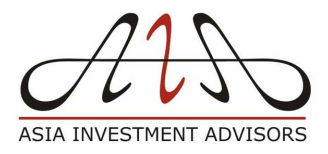Asian fixed-income markets have undergone a sea change in the last five years. The market value of outstanding USD bonds from Asia ex-Japan issuers has soared from USD160bn in 2008 to USD420bn currently.
This dramatic growth is the result of the confluence of many factors. Investors were happy to absorb increasing volumes of bonds as their portfolio values kept rising because of falling interest rates as well as tightening spreads driven by the search for yield. Particularly in Asia, private-wealth investors piled into debt investments, raising their participation in new issues from 1%-4% during 2004 to 2008 to a high of 16% in 2012. Issuers were happy to supply the market, as they benefited from lower cost of funds from falling interest rates and tightening spreads, and as they sought to replace bank loans with bond issues.
But now, there is fear in the fixed-income land. As the Fed began to talk of “tapering” its QE3 purchases of government securities, 10-year Treasury rates have flared up by 100bp in a short period of eight weeks. Not only that, but people have begun to realize that interest rates are due for a continual rise in the 12-24 month horizon. In Asia, new bond issues have slowed to a trickle; the frequent flow of new issues stopped on May 22, followed by just two issues in the last seven weeks.
If indeed interest rates are set to rise continually, and the best days of fixed-income investing are past, then what does the future hold for Asian fixed income?
First of all, Asian investors will need to start appreciating the different roles that fixed income can play in their portfolios. One is capital preservation. While Asian investors have got used to capital appreciation from their fixed-income portfolios, they will need to start viewing them as instruments for capital preservation.
The other role of fixed income is to provide stability; in other words, bonds have a lower beta than equity and are less volatile. If equity markets correct by 20%-40%, bonds will not be completely immune, but would drop by a lower percentage (unless they are highly speculative bonds issued by companies on the verge of default).
Another role of fixed income is to produce stable income. Although it is possible to invest in high-dividend equity, the exit value from the investment is still uncertain; but in case of bonds, investors know the income and the maturity value of the investment (barring default).
The coming period of 2-3 years will be the most challenging for fixed-income: as interest rates rise in response to the improving economic picture in the US, existing bond portfolios are bound to show a mark-to-market loss. But once interest rates reach a higher level with some stability, fixed-income investments will be available at higher yields, making them attractive to Asian investors once again, not for capital appreciation, but as instruments for capital preservation and income generation.
This dramatic growth is the result of the confluence of many factors. Investors were happy to absorb increasing volumes of bonds as their portfolio values kept rising because of falling interest rates as well as tightening spreads driven by the search for yield. Particularly in Asia, private-wealth investors piled into debt investments, raising their participation in new issues from 1%-4% during 2004 to 2008 to a high of 16% in 2012. Issuers were happy to supply the market, as they benefited from lower cost of funds from falling interest rates and tightening spreads, and as they sought to replace bank loans with bond issues.
But now, there is fear in the fixed-income land. As the Fed began to talk of “tapering” its QE3 purchases of government securities, 10-year Treasury rates have flared up by 100bp in a short period of eight weeks. Not only that, but people have begun to realize that interest rates are due for a continual rise in the 12-24 month horizon. In Asia, new bond issues have slowed to a trickle; the frequent flow of new issues stopped on May 22, followed by just two issues in the last seven weeks.
If indeed interest rates are set to rise continually, and the best days of fixed-income investing are past, then what does the future hold for Asian fixed income?
First of all, Asian investors will need to start appreciating the different roles that fixed income can play in their portfolios. One is capital preservation. While Asian investors have got used to capital appreciation from their fixed-income portfolios, they will need to start viewing them as instruments for capital preservation.
The other role of fixed income is to provide stability; in other words, bonds have a lower beta than equity and are less volatile. If equity markets correct by 20%-40%, bonds will not be completely immune, but would drop by a lower percentage (unless they are highly speculative bonds issued by companies on the verge of default).
Another role of fixed income is to produce stable income. Although it is possible to invest in high-dividend equity, the exit value from the investment is still uncertain; but in case of bonds, investors know the income and the maturity value of the investment (barring default).
The coming period of 2-3 years will be the most challenging for fixed-income: as interest rates rise in response to the improving economic picture in the US, existing bond portfolios are bound to show a mark-to-market loss. But once interest rates reach a higher level with some stability, fixed-income investments will be available at higher yields, making them attractive to Asian investors once again, not for capital appreciation, but as instruments for capital preservation and income generation.

 RSS Feed
RSS Feed
